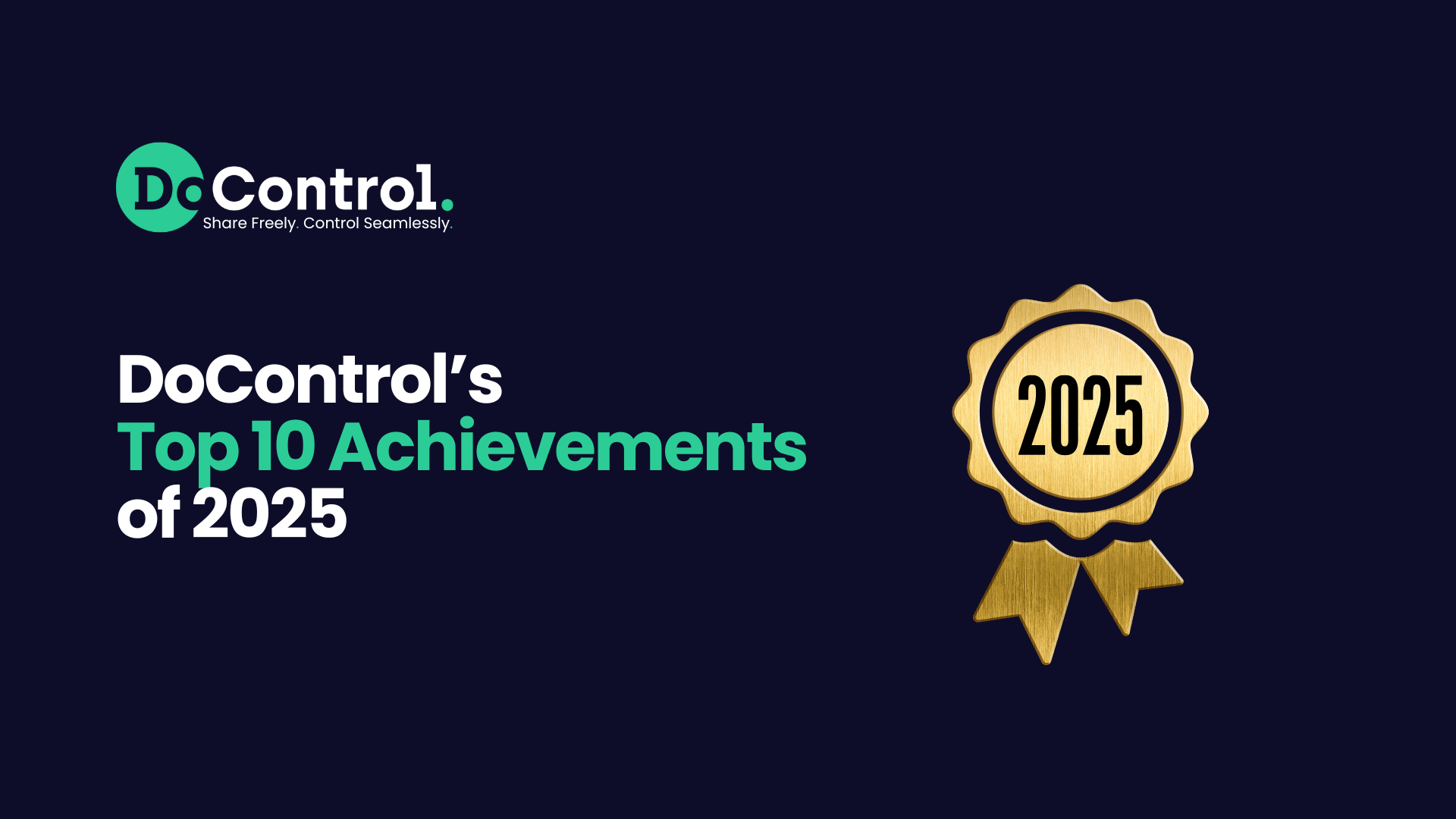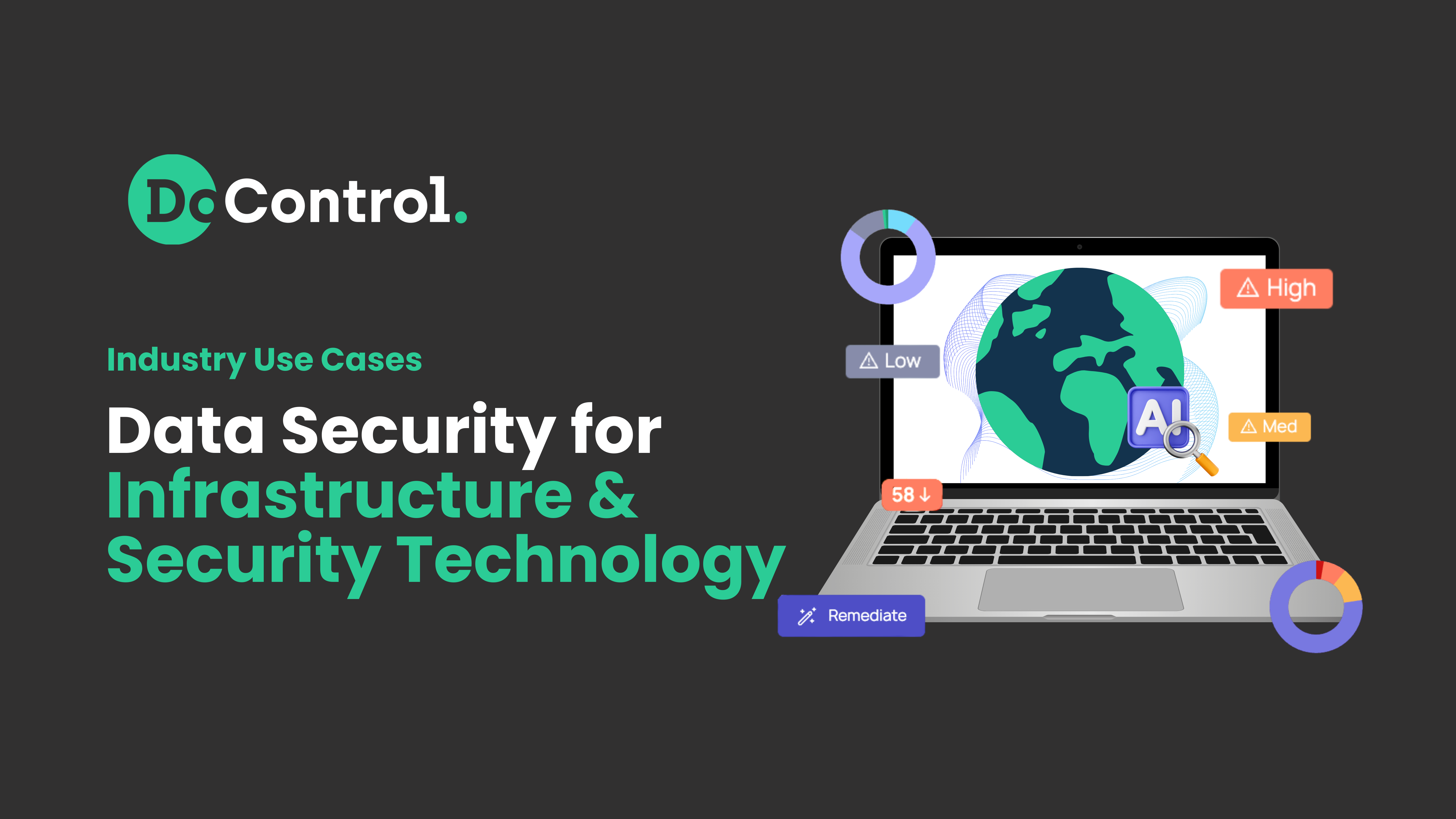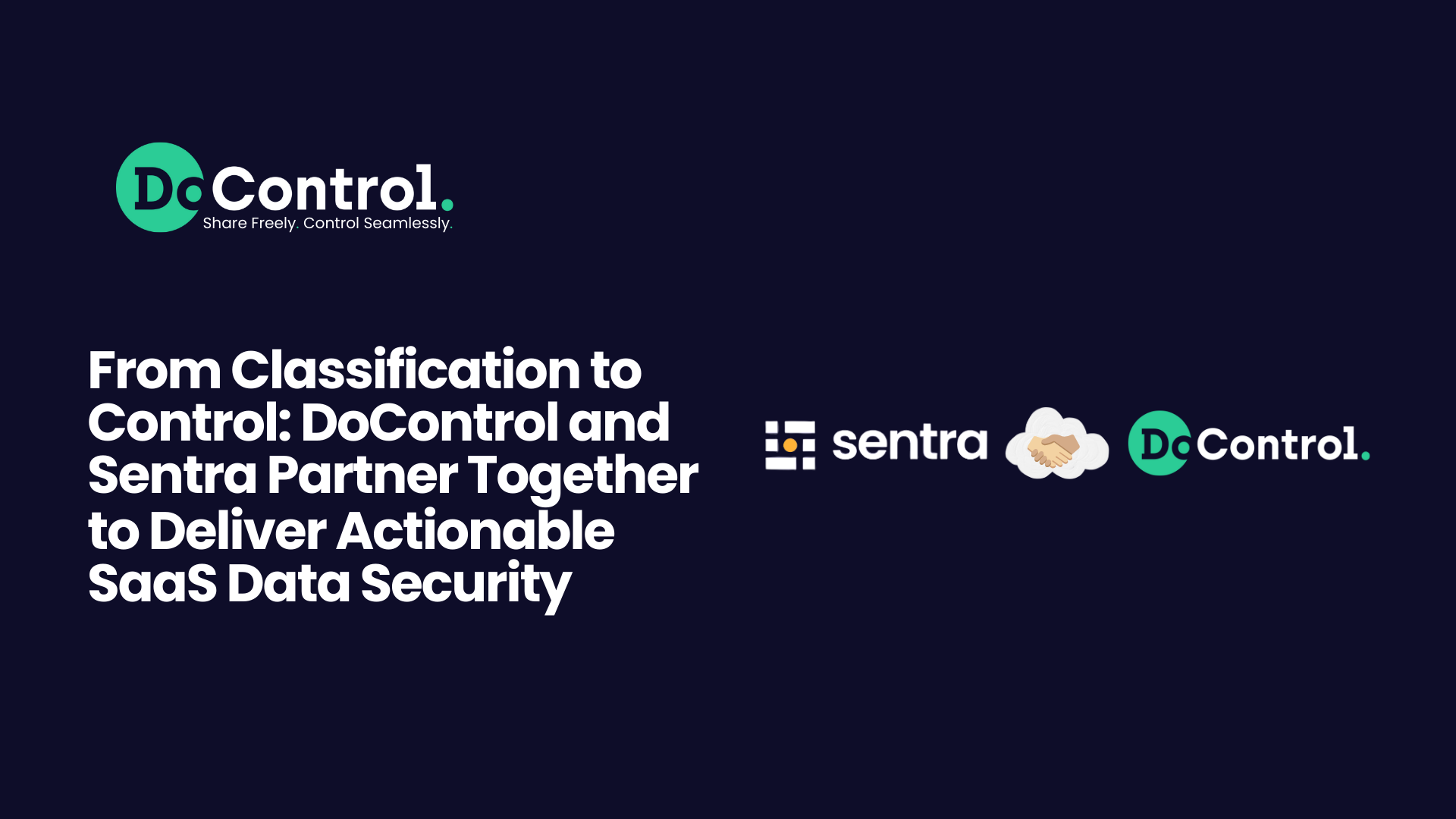
The way organizations operate has fundamentally changed within the last 15 years. So have their cybersecurity practices. With SaaS adoption at an all-time high and hybrid work environments becoming the norm, data is no longer confined to corporate networks.
It moves freely across applications, devices, locations, and users, making it harder than ever to control who has access to what.
In this new reality, sensitive data, company IP, and all other types of sensitive information must be protected at the point of access, not just at the perimeter.
Introducing Zero Trust Data Access (ZTDA): a strategic response to modern access challenges. ZTDA brings Zero Trust principles directly to the data layer, ensuring that access decisions are continuously evaluated and dynamically enforced based on identity, context, and risk. It’s about stopping data loss before it happens, without hindering your business productivity.
In this guide, we’ll break down what zero trust data access really means, why legacy access controls aren’t cutting it anymore, and how to move toward a smarter, more secure approach, one that empowers collaboration while keeping your most sensitive assets protected.
What is Zero Trust Data Access (ZTDA)?
Zero Trust Data Access is the application of Zero Trust principles specifically to data access and usage. Unlike broader Zero Trust frameworks that focus on networks or endpoints, zero trust data access hones in on ensuring that access to data – whether files, records, or content – is only granted to the right person, with the right permissions, in the right context.
At its core, zero trust data access enforces three essential concepts:
- Never trust, always verify: No user or device is inherently trusted, no matter their location or role. Every access attempt is evaluated continuously, not just at login. This means checking who is requesting access, what they’re accessing, how they’re accessing it, and whether it makes sense in context (do they need it for their role? A project they're currently working on? etc.)
- Least privilege by design: Users should only have the access they absolutely need to do their jobs – and no more than that. This applies to both internal users and third parties, and is only attainable through tight privilege access controls. Zero trust data access enforces these controls dynamically, adapting as roles change or projects end.
- Assume a breach is always on the horizon: A zero trust architecture assumes that bad actors will find a way into your environment, whether through phishing, insider threats, or compromised credentials. By limiting access at the data level, the blast radius of any breach is drastically reduced. And, teams are always prepared. Think of the saying, “hoping for the best, but expecting the worst.”
With zero trust data access, organizations shift away from static, perimeter-based controls and toward a model where data access is continuously governed.
With the industry wide shift to the cloud, data now lives outside the traditional network, and beyond traditional oversight from sec teams. This is especially critical in cloud-first ecosystems where collaboration is fluid, and traditional boundaries no longer apply.
Why Traditional Data Access Controls Fall Short Today
Legacy access control models weren’t built for the speed, scale, or complexity of today’s SaaS-driven world or the complex infrastructure of today’s environments. While they may have worked in on-prem or perimeter-heavy environments, they simply can’t keep up with how data is shared and accessed in 2025.
Here’s where they fail:
Static Permissions Don’t Reflect Dynamic Reality
Traditional access controls rely heavily on pre-defined roles and group memberships. Once access is granted, it often stays that way, indefinitely. It’s way too black and white. Allow or deny. There needs to be room for nuance!
In a real-world SaaS environment, people move teams, projects change, contractors come and go. Static permissions can quickly become outdated, leading to excessive privileges and blind spots.
No Visibility into Real-Time Usage
You can’t protect what you can’t see. Legacy systems rarely offer insight into who’s accessing which files, when, and from where. This makes it nearly impossible to detect abnormal behavior.
Without any context and visibility, how can you get a grip on what's happening in your environment, and if it's even risky or not? Lack of visibility and real time usage also allows for gaps in monitoring and detecting. Say there's an exfiltration event, but it's not caught until 30 minutes later – that data is already gone! Remediation should be proactive and before an incident occurs, not a frantic clean up praying you can still salvage something.
Manual Processes Don’t Scale
Many organizations still rely on helpdesk tickets, spreadsheets, or informal requests to manage data access. That doesn’t scale in environments where hundreds of users access thousands of SaaS resources daily. It also opens the door to human error, and significant security gaps.
Think of it: without a scalable process, security teams are left clicking through each issue one at a time, draining security and IT teams’ time, wasting company money and resources, distracting from bigger threats, and leaving data exposed while you play catch up.
Manual processes actually hurt your security posture: every second a security team member spends manually remediating a micro issue, there's a macro threat lurking that needs his/her attention.
Perimeter Security Doesn’t Apply to the Cloud
VPNs and firewalls were designed to protect data within a corporate network. But today, data lives in Google Drive, Slack, Salesforce, Microsoft 365, and dozens of other SaaS platforms, many of which are accessed from unmanaged devices and external collaborators.
The perimeter is gone, but many access controls still assume it’s there. There needs to be a new way.
Overexposure Is the Default, Not the Exception
Public sharing links, misconfigured permissions, sharing with personal accounts…these are common norms in modern SaaS apps. This is for a few reasons: either teams are uneducated on security best practices, leadership doesn't know what vendors are available to them, or they're taking a reactive approach to data protection – only dealing with it after it's too late.
Without the proper education or the right controls in place, sensitive data and proprietary information can easily be overexposed. Again, education is key – without real-time monitoring, you may not even know it’s happening! Companies need to protect sensitive data as it lives and moves.
Zero trust data access flips this script. Instead of granting access and hoping for the best, it enforces access dynamically, revokes it automatically when no longer needed, and provides full visibility into how data and information is being used. It’s a fundamental shift in how we think about data protection in the cloud era, and it’s a shift whose time has come!
Common Data Access Risks in Modern SaaS Environments
Here are five of the most common gaps security teams face today:
1. Lack of Data Access Governance
In many organizations, data access is granted liberally and rarely reviewed. Preventing unauthorized access is a top priority in a robust security strategy, yet many times it feels impossible to tackle it at the enterprise level.
Users accumulate permissions across tools and projects, and shared files are often left accessible long after they’re needed. Without centralized policies or continuous oversight, there’s no clear understanding of who has access to what — and whether they even should have access to that information in the first place.
2. Insider Threats
Not all threats come from the outside. Insider threats are huge in 2025. Employees, contractors, and other trusted users with legitimate access to sensitive data can pose significant risk, whether through negligence or malicious intent.
Even if a user has the proper authorization to enter your environment, they can still have malicious intent when it comes to your data. Mass downloads, external sharing of confidential files, or data forwarding before offboarding are increasingly common and difficult to detect with legacy security tools.
3. Identity Risks
SaaS environments rely heavily on identity and OAuth-based access. While convenient and necessary, these systems can also be exploited. Stolen credentials, session hijacking, and improperly scoped tokens make it easy for attackers to impersonate real credible users via their identity profile and move through systems undetected, especially when access controls don’t adapt to risk signals like device, location, or behavior.
4. Sneaky Shadow Apps
End users frequently connect third-party apps to core SaaS platforms without IT approval. These apps often request extensive permissions – such as the ability to read, write, or modify files – and can become unmonitored entry points for data exfiltration or exposure. Without a clear inventory of connected applications, these risks remain invisible. Organizations need to secure these apps and make sure that they are implementing zero trust when it comes to third party applications as well.
5. Misconfigurations
Simple missteps (enabling public links on sensitive folders, leaving document libraries unprotected, or allowing guest access without expiration) can lead to broad, unintentional exposure. These misconfigurations are often introduced during normal operations and persist due to a lack of regular review. In 2025, ensuring your infrastructure maintains compliance across SaaS tools is a necessity that most teams struggle with at the enterprise level.
6. Overexposed Data
Default sharing settings, legacy group memberships, and one-size-fits-all permissions create a situation where far more users have access to sensitive data than necessary. Public files shared with “anyone with the link” permissions, lingering external collaborators, and excessive internal permissions increase both the likelihood and impact of data loss.
These risks are not hypothetical, they’re deeply embedded in how organizations use SaaS every day. Addressing them starts with gaining the right level of visibility and applying access controls that adapt to the real-world context of how data is used.
The Importance of Granular Visibility and Contextual Access Control
Modern security demands a shift from broad, static policies to precision-based, context-aware controls. In dynamic SaaS environments, access should be governed not only by who a user is, but by how, when, why, and under what conditions they interact with data.
Visibility at the File and User Level
Granular visibility is essential for strong risk management, and the concept of it really is so simple. True granular visibility means more than just knowing which users have access to which apps. It means understanding, in real time:
- What information is being accessed, which specific files and data are being accessed, and whether its appropriate
- Who within the organization is accessing them
- How access is being granted (direct, link-based, via third-party app)
- Whether that access aligns with actual business intent (does it add up with their role, their scope, their current projects?)
This level of insight enables security teams to spot unusual behavior – such as large-scale external sharing from a dormant user account – or identify excessive access patterns that should be re-evaluated.
The Role of Context in Access Decisions
Contextual access control moves beyond identity-based policies by factoring in who that user is in the context of the activity being taken:
- Is the access request in-line with that user's usual job function?
- Is the user acting outside their normal working hours or geography?
- Is the data being accessed considered sensitive or restricted?
By analyzing these signals, the organization can shift from blanket allow/deny decisions to more nuanced responses – granting access, enforcing additional verification, or automatically triggering reviews based on risk.
Continuous Evaluation, Not One-Time Approval
Legacy access models typically rely on one-time approvals; permissions are granted and rarely revisited. But access needs change constantly. Contextual control enables ongoing evaluation of permissions based on changing roles, user behavior, or environmental risk, helping ensure that access remains appropriate over time.
The result is a smarter, more resilient approach to securing data access—one that adjusts to the fluid nature of modern work without creating unnecessary friction for end users.
DoControl's Approach to Simplifying Zero Trust Data Access
Zero Trust is a powerful concept, but in practice, implementing it across today’s sprawling SaaS environments can be complex, fragmented, and resource-intensive. That’s exactly the problem DoControl was built to solve.
With new data security incidents happening every day and cyber threats becoming more sophisticated, the risk landscape keeps evolving. So does our service.
At DoControl, our mission is to help the modern organization embrace SaaS without compromising on security. Our technology does just that. We provide a unified platform that simplifies Zero Trust Data Access by giving security teams the tools to govern data, detect threats, and enforce policy, automatically, and at scale. Here's what we offer:
- Data Access Governance: Discover all your SaaS data, classify risk, and remediate at scale with our highly efficient, event-based architecture, integrated with HRIS and IdP tools for enhanced context.
- Shadow Apps Discovery and Remediation: Identify, risk score, and remediate third-party applications in your environment.
- Data Loss Prevention: Utilize NLP for real-time data discovery and classification, protecting a wide range of data types. Combine this with contextual user data from HRIS and IdP tools, and engage end-users effectively.
- Identity Threat Detection and Response: Using HRIS and IdP integrations, we risk-score each user based on their behavior and benchmark it against the department. Understand who is accessing or sharing data in ways that deviate from their usual patterns.
- Misconfigurations: Ensure compliance with industry standards like CIS and SOC II by mapping your SaaS application configurations and continuously monitoring for misconfigurations.
DoControl’s robust workflows make risk management easy and automated. By engaging end users directly, our digital platform reduces the risk of unauthorized access, making the data security model stronger than ever before.
Security teams gain peace of mind knowing that sensitive information stays protected – with all of this happening automatically, regardless of whether the security team is actively monitoring the environment.
What this really means? For busy sec teams, you can trust our workflows to do the heavy lifting. We prevent any threats from coming in, only ensuring that authorized users are taking the least privilege access actions. We protect your sensitive data 24/7 so you don't have to worry about it. DoControl truly acts as a partner in your data security.
The Takeaway? Secure Access Starts at the Data Layer
As cloud computing dominates enterprise workflows, data security has to adapt. Traditional security models struggle with SaaS complexity, but there are solutions that make least privilege access the norm.
Whether you’re dealing with insider threats, user identity risks, shadow SaaS, or misconfigurations, the right approach to zero trust data access and obtaining a truly secure environment gives you the visibility and control to move confidently in the cloud.
DoControl makes this possible by turning Zero Trust from a framework into an operational reality, simplifying policy enforcement, streamlining remediation, and giving security teams the context they need to act with precision.
Want to Learn More?
See how we’re rewriting the Zero Trust Approach - Read the Press Release here
Read more on how to secure your SaaS environment - The CISOs Guide to Data Protection
Curious about compliance? Learn what you need to know here
Need trust in your security provider? See some customer love



